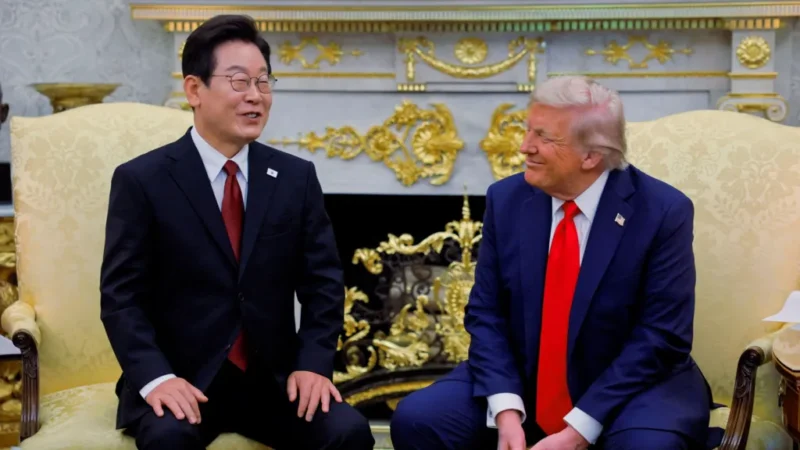How the End of a Key US Tariff Exemption Will Affect Shoppers

A major shift in US trade policy is poised to impact shoppers and small businesses alike. As of Friday, the United States has officially ended a long-standing tariff exemption for low-value imports, disrupting the flow of millions of daily shipments.
Under the now-expired “de minimis” exemption, goods valued at $800 or less entered the US duty-free. In 2024 alone, nearly 1.4 billion packages—worth more than $64 billion—were imported using this rule. That changes now.
What Is the De Minimis Rule?
The de minimis rule, in place since 1938, was designed to avoid the administrative burden of collecting small import duties. Over time, the threshold was raised, making it a cornerstone of global e-commerce. It enabled companies—especially fast-fashion giants like Shein and Temu—to ship low-cost goods directly to US buyers without warehousing or tariffs.
But the exemption wasn’t exclusive to these firms. Countless small businesses, both foreign and domestic, structured their logistics around this cost-saving “loophole.”
Now, that flexibility is gone.
Why the Change?
The repeal was fast-tracked by President Donald Trump via executive order, well ahead of the previously scheduled 2027 phase-out. Trump’s administration argues the change will protect US businesses, combat counterfeit and illegal goods, and generate an estimated $10 billion annually in new revenue.
“Thousands of lives will be saved by reducing narcotics entering through the mail,” said Peter Navarro, Trump’s trade adviser, pointing to misuse of the exemption for drug smuggling—especially fentanyl.
How It Will Work Now
-
Shipments now require full customs documentation, including materials’ origin.
-
If documentation isn’t available, a fixed tariff of $80–$200 per package applies depending on the country’s tariff rate.
-
Letters and personal gifts under $100 remain exempt.
-
A six-month transition period allows some flexibility before full enforcement.
Who’s Affected the Most?
Experts say the rule change will hit small businesses hardest. These companies often lack the resources or infrastructure to handle customs paperwork or audit costs.
Take Katherine Theobalds, founder of Buenos Aires-based shoe brand Zou Xou, who fears this could end her business. Her artisan-made shoes are crafted in Argentina and shipped directly to US customers, often using the de minimis exemption. Now, she faces rising costs and logistical hurdles.
Similarly, UK-based Wool Warehouse has paused US orders, citing uncertainty around new processes. Its managing director, Andrew Smith, expects prices to rise by up to 50% and is overhauling the company’s website to clearly display new tariff-inclusive pricing.
Impact on US Consumers
-
Higher prices on imported goods
-
Slower delivery times
-
Reduced product variety, especially from niche or overseas sellers
Buyers like Christopher Lundell, a vinyl record collector in Oregon, are already feeling the change. A UK-based seller cancelled his $5 order, citing halted US shipments. “It feels like political theatre,” he said, frustrated by the sudden barrier to global marketplaces.
Several postal services in Europe and Asia paused shipments to the US this week as they scramble to adjust to the new requirements.
Tariff Rates: What to Expect
Tariffs now vary based on origin:
-
≤16% tariffs: $80 per item
-
16–25% tariffs: $160 per item
-
>25% tariffs: $200 per item
Goods from Brazil and India are subject to some of the highest tariffs (up to 50%), while countries like the UK and Australia face lower rates.
Winners and Losers
US-based retailers like Gap Inc. have welcomed the move, arguing it levels the playing field. “The de minimis loophole allowed importers to dodge duties that domestic brands couldn’t avoid,” Gap said.
But for international sellers, the change threatens to squeeze margins or price them out of the US market altogether. Trade expert Deborah Elms warns that small firms may not survive the additional burden of audits, documentation, and express courier costs—especially while standard postal services delay operations.
Could China Benefit?
Ironically, Chinese retailers might weather the storm better than others. Shein and Temu have already built US-based distribution centers, allowing them to pivot faster than European or South American sellers. According to logistics expert Tam Nguyen, Chinese firms are “months ahead” in adapting to the new system.
Nguyen also noted that the entry-level e-commerce model—“launch a website, ship goods”—no longer applies. The barrier to entry has been raised significantly.
What’s Next for Shoppers?
For now, Americans should prepare for:
-
Fewer international shopping options
-
Potential delivery delays
-
Higher overall costs, especially for niche or artisan goods
Retailers may begin favoring domestic options again, with shoppers reverting to big-box stores like Walmart or Target for convenience.
But for those who value unique, handmade, or specialty items from overseas, the cost—and complexity—of buying just went up.






